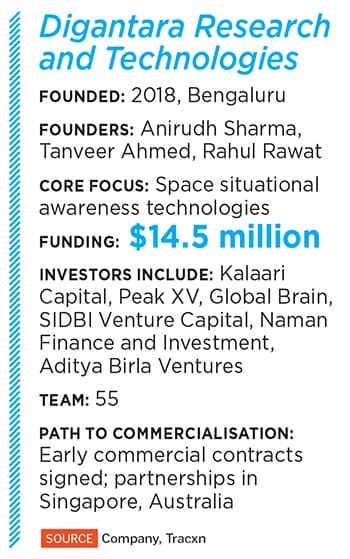Digantara: Building a Google Maps for space
Digantara is evolving into a provider of an important infrastructure layer to not only commercial space economy customers, but also for India's strategic and defence purposes
 (From left) Tanveer Ahmed, Rahul Rawat and Anirudh Sharma, co-founders, Digantara
Image: Nishant Ratnakar for Forbes India
(From left) Tanveer Ahmed, Rahul Rawat and Anirudh Sharma, co-founders, Digantara
Image: Nishant Ratnakar for Forbes India
The founders of Digantara Research and Technologies describe their venture as a “space situational awareness” company. Anirudh Sharma and Rahul Rawat started tinkering with the idea for it while they were still in college, in Punjab, in 2018, having learnt of a satellite club their friend Tanveer Ahmed was running in Bengaluru.
The trio got into it in real earnest from 2020, having graduated with degrees in engineering, and with incubation and grant support from the IISc. Today, Digantara is evolving into a provider of an important infrastructure layer to not only commercial space economy customers, but also for India’s strategic and defence purposes.
“There are over 11,000 active satellites in orbit, and that number will only increase,” says Sharma, the CEO. “We need a mechanism to navigate an orbit and understand what’s happening. Think of what we’re building as Google Maps for space.”
 The significance of the work being done by companies such as Digantara is that, in aviation or in maritime navigation, there are internationally recognised rules and organisations. “We don’t have something similar in space,” Sharma adds. Today’s geopolitics makes the prospect of such an accord distant.
The significance of the work being done by companies such as Digantara is that, in aviation or in maritime navigation, there are internationally recognised rules and organisations. “We don’t have something similar in space,” Sharma adds. Today’s geopolitics makes the prospect of such an accord distant.
(This story appears in the 12 July, 2024 issue of Forbes India. To visit our Archives, click here.)


















